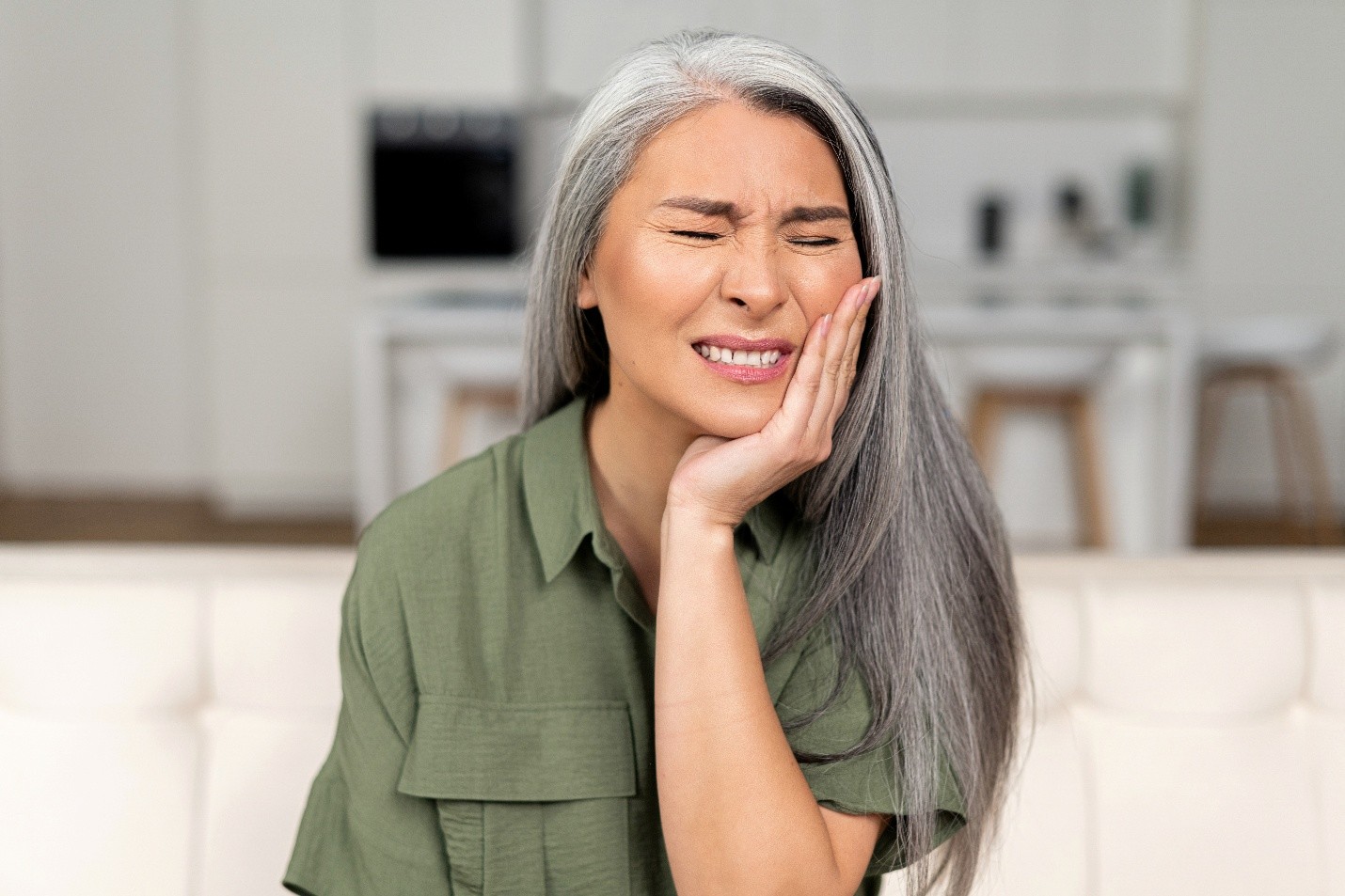What is burning mouth syndrome?
Burning mouth syndrome (BMS) is a condition that causes pain and discomfort in your mouth, lips, or tongue. The feeling is often described as a burning, scalding, or tingling sensation. BMS is more common in women than men. It is found more in women during or after menopause. The cause of BMS can be hard to pin down. Some people may have symptoms for months or years and never know why.
Symptoms of burning mouth syndrome
Some people with BMS report symptoms appearing suddenly. For others, they may develop gradually over time. Typical symptoms of BMS include:
- Burning feeling in the mouth, tongue, or lips
- Dry mouth
- Bitter or metallic taste
- Loss of taste
BMS may occur every day, or it may come and go. Some people wake up with pain and it lasts all day. Others wake up with little pain but it gets worse as the day progresses. Regardless of the pattern, the symptoms may last for months to years.
What causes burning mouth syndrome?
The exact cause for BMS is unknown. Cases have been linked to:
- Nerve damage
- A dental procedure
- Nutritional deficiency (such as iron, zinc, or some B vitamins)
- Menopause or other hormonal changes
- Certain medicines (such as ACE inhibitors) used to treat high blood pressure
- Extreme allergic reactions
- Health conditions that alter taste or saliva production
- Oral yeast infection (thrush)
- Mental disorders (such as anxiety or depression)
Many times, more than one cause is present. Sometimes doctors can’t find the cause.
You are at higher risk of developing BMS if you are:
- A woman
- Post-menopausal
- Over age 50
How is burning mouth syndrome diagnosed?
There is no simple way to test for BMS. Your doctor will examine your mouth and ask about your medical history and symptoms. This will help better pinpoint a possible cause. They may perform tests to rule out other possible issues. This could include an oral swab to check for thrush. It may also include blood tests to check for conditions such as diabetes, thyroid issues, or mineral deficiencies.
Can burning mouth syndrome be prevented or avoided?
Since there isn’t a known cause for BMS, you cannot prevent or avoid it.
Burning mouth syndrome treatment
There is no specific cure for burning mouth syndrome. The best thing you can do is address your symptoms. Treatment is based on your symptoms, their severity, and the underlying cause. Possible treatment options include:
- Products to produce saliva and relieve dry mouth
- Vitamin supplements (such as iron, zinc, or vitamin B) to provide nutrition
- Ointments (such as Capsaicin) to relieve pain
- Depression or anxiety medicines to relieve pain and improve your nervous system
If your doctor thinks a certain medicine is causing BMS, they might suggest switching to a new one.
If your doctor can’t find a cause, they may recommend trying oral thrush medicines, B vitamin supplements, or antidepressants. These have been found to be effective in treating BMS.
Living with burning mouth syndrome
Most cases of BMS improve on their own. Additional tips for easing your symptoms include:
- Sucking on ice chips
- Drinking plenty of liquids
- Avoiding hot and spicy foods
- Avoiding foods and drinks that are high in acid, like citrus fruit, soda, and coffee
- Avoiding alcohol and tobacco products
- Avoiding products that contain alcohol
- Trying a new brand of toothpaste
Questions to ask your doctor
- If I have dry mouth, am I at higher risk of getting burning mouth syndrome?
- What can I do to get rid of the taste and burning feeling in my mouth?
- What can I do if I’m having trouble sleeping because of the pain?
- Is something I’m eating causing my mouth to burn? If so, what changes can I make to my diet?
- Will burning mouth syndrome go away on its own?
ADVERTISEMENT
ADVERTISEMENT





